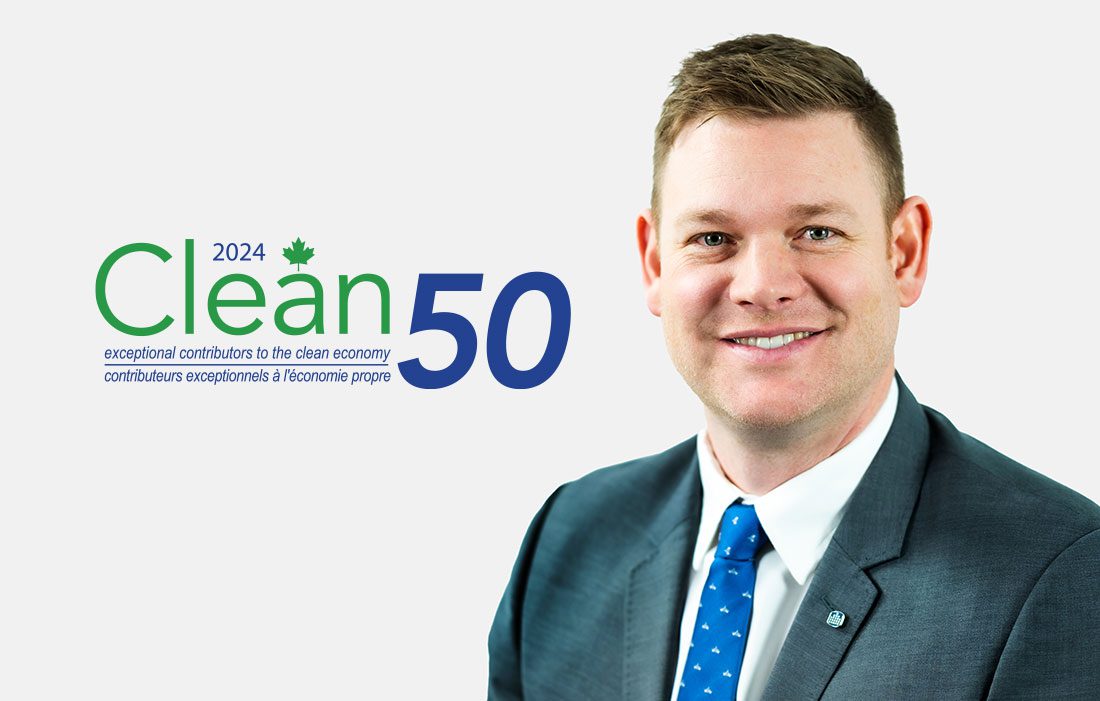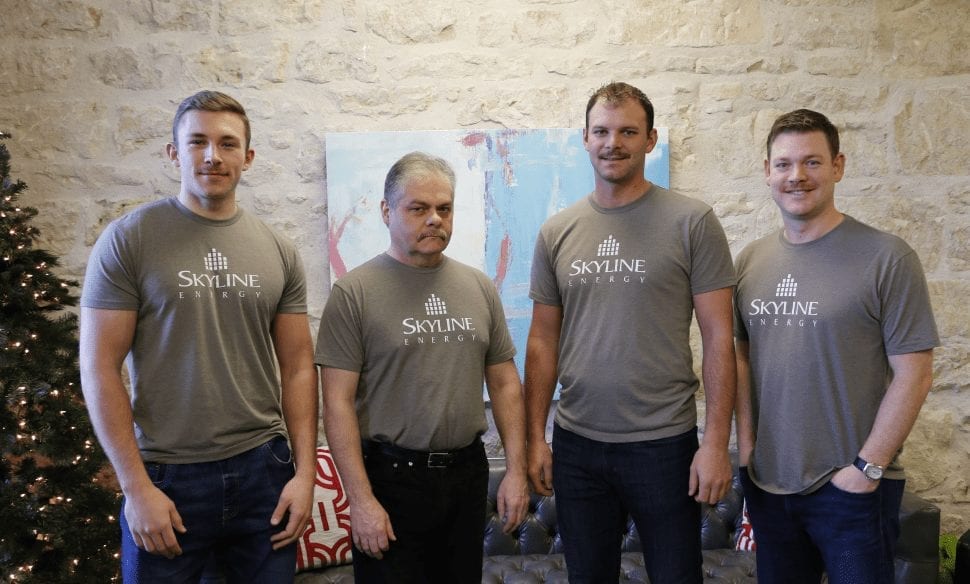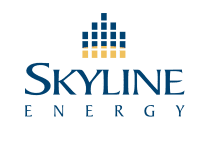
SustainableBiz.ca: Clean energy infrastructure investment
August 24, 2021 News
[Guelph, Ontario – August 24, 2021]
Read the original article published on SustainableBiz.ca: “Real estate owners: the sun continues to shine on clean energy infrastructure investment”
2021 is the “make it or break it” year for climate change, according to the United Nations Secretary-General.1 Last year was one of the three warmest years on record in the history of our planet; what’s more, Natural Resources Canada’s 2019 Climate Change Report found that Canada is warming twice as fast as the rest of the world.2
Amid the crucial demand to lower CO2 emissions across the globe, interest in sustainable investing is on the rise.3 More investors are seeking opportunities that not only generate attractive returns but employ ethical and responsible environmental, social, or governance practices.
A Canadian spotlight on clean energy infrastructure
One method of sustainable investing is seeking investment in clean energy infrastructure: any asset that produces clean energy, or helps to optimally deliver it.
Clean energy infrastructure is currently in the Canadian spotlight. To bolster its strengthened climate plan4 released at the end of 2020, Canada’s 2021 budget includes an additional $17.6 billion investment in projects to reduce greenhouse gas emissions further; among these projects is the creation and adoption of clean energy infrastructure.5
Elements of the budget include a plan to invest $964 million over four years to advance grid modernization projects and the creation of new cleantech jobs, which carries the promise of building Canadian cleantech expertise that allows us to improve the efficiency of our power grids.6
Clean energy options for real estate owners
Commercial real estate owners can be part of the solution when it comes to furthering the adoption of clean energy production in Canada—and they can reap potential rewards by way of significant cost savings.
“A rooftop solar array can not only increase a property’s Net Operating Income (NOI), it can generate a new income stream independent of tenant rental payment,” said Rob Stein, President, Skyline Energy, a Canadian clean energy asset management, monitoring, and maintenance firm.
“The property owner can lease the rooftop – while potentially cutting energy costs by powering the building with the electricity generated by the solar assets.”
Solar arrays can also be installed in tandem with battery energy storage systems. These systems can optimize the best times to charge (i.e. during off-peak times) and discharge (i.e. during high-peak times) to further reduce energy demand costs – a strategy known as peak shaving.
“Energy storage systems can also provide backup power during outages, which is an especially important prospect for large-scale facilities that require an interim power source while waiting for a generator to kick in,” added Stein.
In fact, energy storage may even be one of the keys to meeting the growing demand for new commercial warehousing/logistics facilities, as these systems make it possible for energy-intensive facilities to be built in locations where the electricity grid cannot deliver stable power. Along the same line, energy storage also makes it possible to install EV charging stations in places that would otherwise not be possible due to grid capacity.7
EV charging stations themselves are another potentially lucrative clean energy investment.
“Property owners can take advantage of federal and provincial incentives, broken down by sector, type of building, or type of charging infrastructure,” said Darcy Boudreau, General Manager, Anvil Crawler Development Corp, a clean energy consulting and construction company that helps developers and businesses of all sizes adopt and transition to various clean energy technologies.
“Multi-residential owners can pre-lease, while properties like retail plazas or tourist attractions can charge an hourly rate.”
Microgrid systems have been touted as a smart solution to help some properties integrate sustainable power production and usage without plugging into, or overtaxing, the grid.8 They can integrate multiple clean energy components: solar, energy storage, and EV infrastructure. Natural Resources Canada’s Electric Vehicle Infrastructure Demonstration (EVID) Program is offering applicants potential funding for projects that will reduce barriers to the adoption of EVs – such as this multiple-microgrid project launched in early August.
An example of fully integrating real estate & clean energy
One commercial real estate owner has gone a step further, fully integrating clean energy infrastructure investment into its business model. Skyline Group of Companies (Skyline) installed its first rooftop solar asset in December 2011 at a multi-residential property in Guelph, Ontario, since expanding the solar project to 55 properties. The assets provide a supplementary income stream via the 20-year government Feed-In Tariff (FIT) contracts the assets operate under, whereby the government purchases the energy generated for a fixed price.
Skyline has also created its own clean energy investment product: Skyline Clean Energy Fund (SCEF), a $181 million9 portfolio of rooftop and ground-mounted solar assets across Ontario, available to Accredited Investors. The assets are acquired and managed by Skyline Energy, and monitored and maintained by Anvil Crawler Development Corp. Skyline Wealth Management, the investment dealer offering the Fund to investors, provides “on-demand” free webinars for prospective investors to find out more about SCEF.
1 https://public.wmo.int/en/media/news/2021-%E2%80%9Cmake-or-break-year%E2%80%9D-climate-action
3 https://www.cnbc.com/2020/12/16/climate-change-will-be-a-big-2021-focus-in-esg-market-analyst.html
5 https://www.budget.gc.ca/2021/report-rapport/p2-en.html#chap5
7 https://www.jll.co.uk/en/trends-and-insights/cities/energy-storage-advances-amp-real-estate
9 Prior to December 1, 2020, SCEF had reported Total Assets as being the value on the IFRS compliant balance sheet. This meant joint venture assets being reported as equity investments on a net asset basis, as opposed to reporting both the equity and debt portion of the joint venture asset. As of December 1, 2020, SCEF is reporting Total Assets Under Management (“TAUM”) in place of Total Assets. TAUM has been calculated monthly since the Fund’s inception and has replaced any previously reported Total Assets. The TAUM metric will report the proportionately owned assets and liabilities of these joint venture assets. SCEF believes reporting the TAUM is more reflective of the actual total value of the assets that the Fund owns, as well as the credit risk associated with these assets.
About Skyline Clean Energy Fund
Skyline Energy is a clean energy asset acquisition, management, and innovation firm.
Servicing Skyline Clean Energy Fund (SCEF), a privately owned and managed portfolio of clean energy assets, Skyline Energy purchases, manages, monitors, and optimizes all assets within SCEF, in order to surface exceptional value for SCEF’s investors.
Skyline Energy believes that by investing in sustainable and renewable energy, we are investing in a brighter future for the planet, and for generations to come.
To learn more about Skyline Energy and its role for Skyline Clean Energy Fund, please visit SkylineEnergy.ca.
Skyline Energy is part of Skyline Group Of Companies.
About Anvil Crawler Development Corp.
Anvil Crawler Development Corp (“ACDC”) is a clean energy, electrical services, and engineering, procurement, and constructions (EPC) firm based in the Guelph, Ontario area.
It provides turn-key services for various clean energy assets and infrastructure including solar, wind, EV infrastructure, battery energy storage systems (BESS), off-grid energy generation, and Combined Heat & Power (CHP) systems. ACDC also provides comprehensive traditional electrical contracting services across Ontario.
ACDC’s clients span from multi-residential to commercial to industrial; they include real estate and clean energy investment funds, private corporations, domestic and international developers, and various levels of goverment.
To learn more about Anvil Crawler Development Corp, please visit AnvilCrawler.com.
Anvil Crawler Development Corp. is part of Skyline Group Of Companies.
For media inquiries, please contact:
Cindy BeverlyVice President, Marketing & Communications
Skyline Group of Companies
5 Douglas Street, Suite 301
Guelph, Ontario N1H 2S8
cbeverly@skylinegrp.ca
More from this category:

Skyline Energy President Recognized as 2024 Clean50 Honouree
[Guelph, Ontario – September 29, 2023] Rob Stein, President, Skyline Energy, has been recognized as one of Canada’s 2024 Clean50 Honourees. Stein leads the operations and financial performance of both Skyline Energy, a clean energy asset manager, and Skyline Clean Energy Fund, an equity growth fund comprised of solar and biogas assets totalling 50.16 MW/DC1 in [...]
Skyline featured in Canadian Apartment Magazine for decarbonization efforts
[Guelph, Ontario – April 21, 2023] Read the original article published in Canadian Apartment Magazine. R. Jason Ashdown, Co-founder & Chief Sustainability Officer, and Rob Stein, President, Skyline Energy, were featured in an article published by Canadian Apartment Magazine on how rental housing providers can implement sustainability practices to lower their carbon footprint. The article [...]

